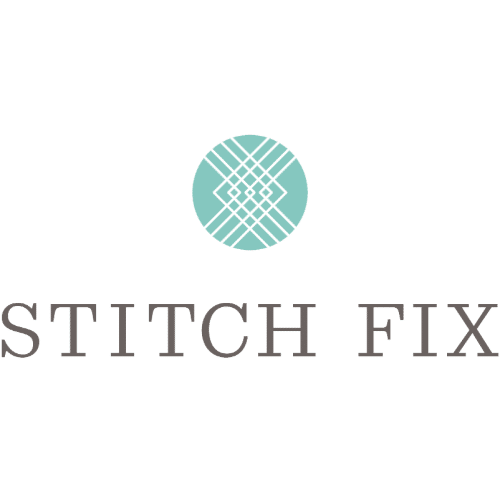Clothing subscription retailer Stitch Fix released mixed financial results for the third quarter of their 2020 fiscal year. For the period ended May 2, 2020, the company reported 3.4 million active clients, a 9% increase year-over-year. Net revenue per client increased 6% to $498. While this was the eighth consecutive quarter of growth, net revenue was down 9% to $371.7 million, compared to $408.9 million in Q3 FY2019. Stitch Fix reported a net loss of $33.9 million, or diluted loss per share of $0.33.
In the earnings call, Stitch Fix founder and CEO Katrina Lake commented on how shopping has changed since the COVID-19 pandemic began, but she feels the company is well positioned to meet customers’ changing needs.
“Now more than ever, we are confident in our ability to redefine how clients shop and find what they love. As consumers rapidly shift their purchase behavior online at a step change in historic rates, we believe our model were outperformed and continue to take share, which we began to see play out in Q3 and in the early weeks of Q4,” Lake said.
Lake noted that, while the clothing subscription company saw a 9% revenue dip for the quarter, apparel retail overall declined 80% during the same period. She thanked their auto-ship (subscription) clients and direct buying for being able to hold their own during the pandemic. Lake also believes that the company’s personalized styling services bring clients back for recurring subscription Fixes.
“These results and the momentum we’ve seen in April and May strengthen our belief that the concept of trying on clothes in the comfortable own home has never been more resilient and that an offering that can predict great fit and styles you love is needed more than ever,” said Lake.
Part of the company’s success is a trend that Lake believes will continue to grow in the months to come. Because the brick-and-mortar experience will change as a result of COVID-19, even customers who have not previously bought clothes online will try services like Stitch Fix.
“While our store-based competitors retrench in the face of negative comp sales and store closings and pulled back their capital investments, we are leaning in and investing in new capabilities like direct buy and automation that position us to take greater share in our near future. In particular, given the momentum we’ve witnessed with direct buy and a frictionless entry point we think it represents, we plan to make it accessible to new clients as an acquisition vehicle in the coming months,” Lake added.

Here are other highlights shared by Lake during the earnings call:
- From February through mid-March, subscription and direct buy sales drove net merchandise growth of 20% year-over-year.
- In the third week of March, Stitch Fix closed facilities in South San Francisco, Dallas and Bethlehem (Pennsylvania) which reduced capacity for fulfillment by half of the company’s U.S. warehouses. This also caused a backlog in direct buy fulfillment.
- By the end of March, U.S. warehouse capacity dropped by nearly 70% with backlog doubling in the last two weeks of March.
- Stitch Fix offered warehouse associates up to four weeks of paid leave to provide flexibility and time to care for their families.
- At the end of March, the company began reopening their closed facilities to ship subscription Fixes again.
- Employees at distribution centers could work on an opt-in basis. This provided fewer associates to fulfill orders, but Stitch Fix wanted to be sensitive to its employees’ health and safety.
- By the end of the quarter, employees returning to work, warehouse capacity and net sales revenue had improved. The company was operating at about two-thirds capacity.
- Customers prefer to get Fixes on a recurring schedule, whether it is every two or three weeks, monthly or quarterly. This helps the company anticipate and manage demand.
On the earnings call, Stitch Fix president Elizabeth Spaulding spoke of the company’s work to capitalize on its new direct buy option, something the company has been testing for a while. This opportunity, allows customers to shop and select items based on personalized recommendations. So far, the offering has been successful, growing from 5% to 13% of the company’s female client base.
“This momentum also supports our belief that there is an ongoing structural shift in retail resulting from COVID and that our hyper personalized experience will be an essential way to support client in this new normal,” Spaulding said.

The company’s financial report was released just days after news broke that Stitch Fix plans to lay off 1,400 stylists in California by the end of September. The reason? The high cost of doing business in California. Lake said the company would locate employee centers in less expensive parts of the country like Austin, Texas and Minneapolis, Minnesota and hopes to hire 2,000 replacement stylists over the next year or so.
Insider Take:
It is hard to decipher the results of this financial report, because there is conflicting information. First, the clothing subscription company had growth in terms of number of subscribers and an increase in average revenue per customer. However, revenue dropped slightly and the company reported a sizable net loss. At the same time, the company is making strategic moves that make sense and address the challenges of selling retail in a post-COVID world. The company is also trying to cut costs with layoffs, followed by rehiring. Bottom line: there are a lot of moving parts here and no one knows how the economy is going to be impacted in three, six or 12 months from now. However, Stitch Fix has a solid customer base, new product offerings in the works and solid strategies that look promising. Despite the negatives, they seem to be well positioned to be successful.








